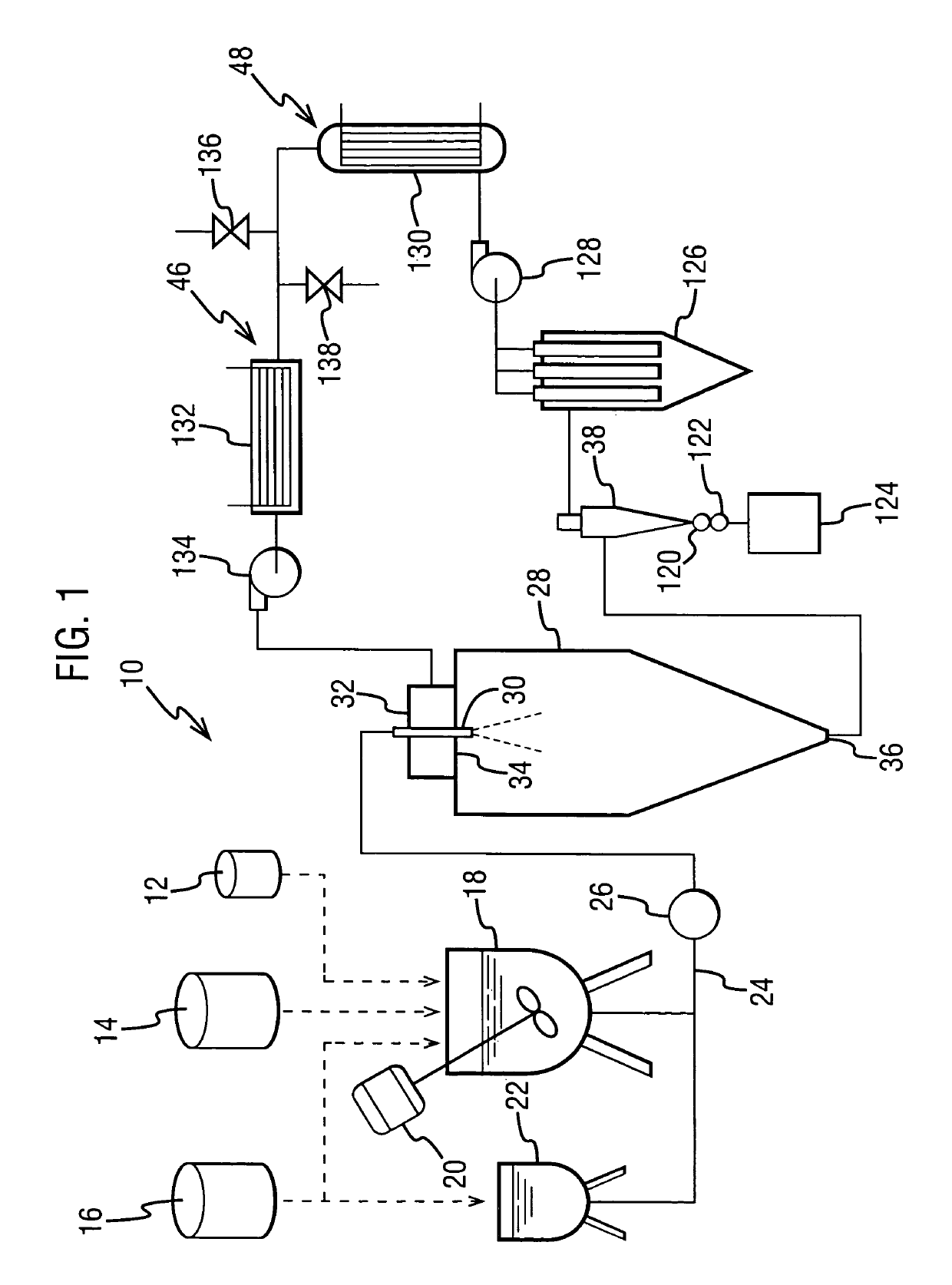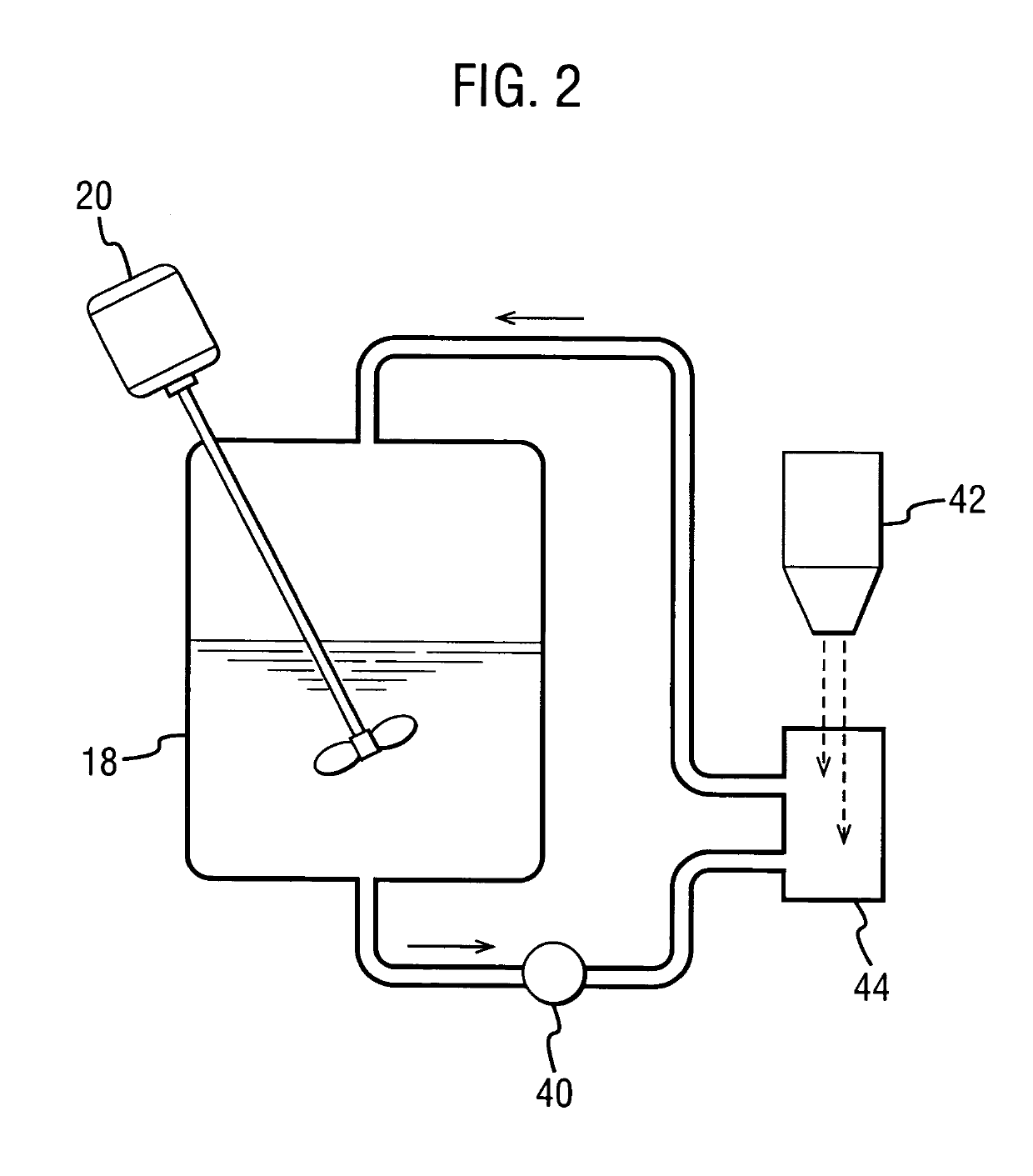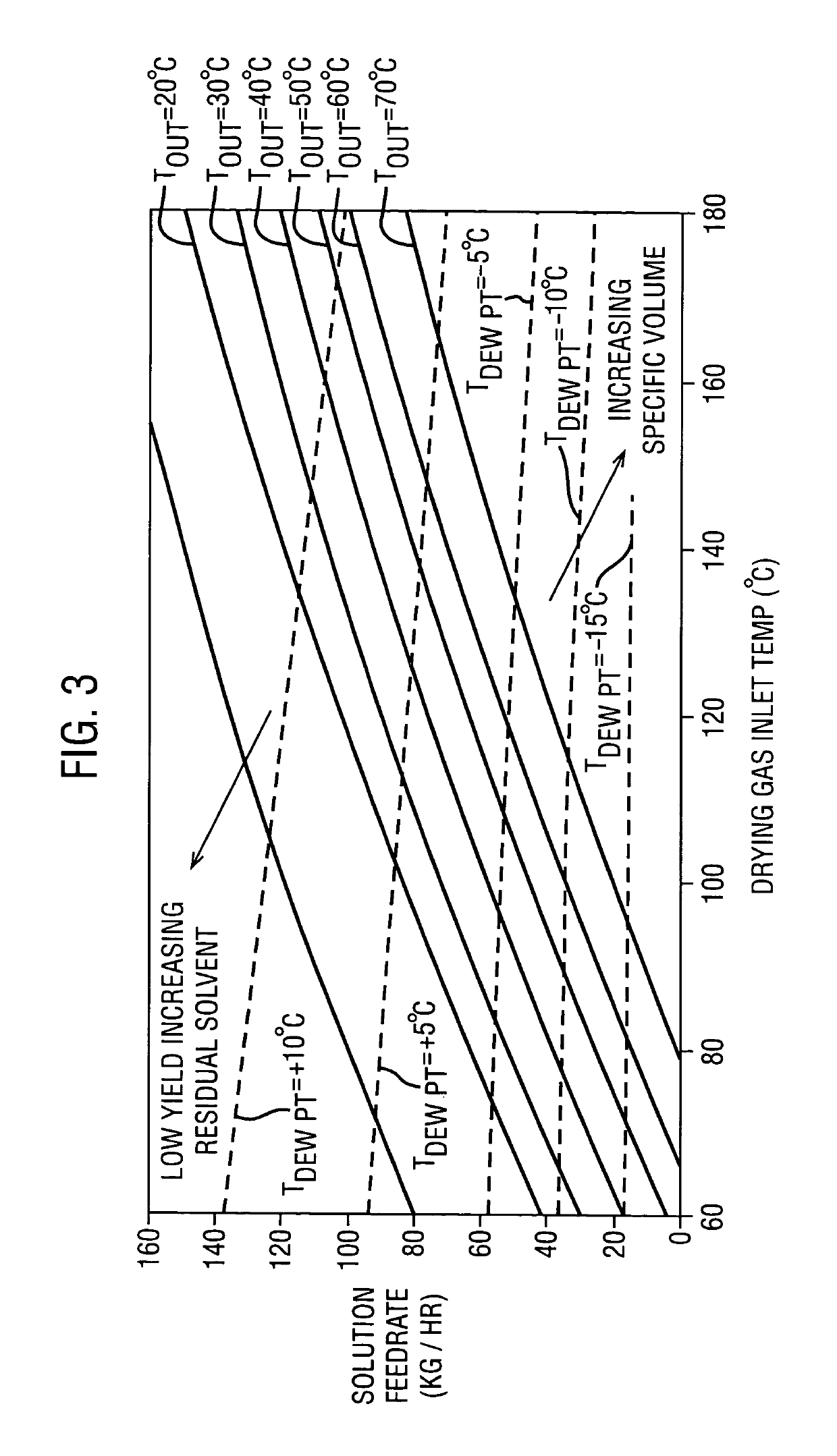Spray drying processes for forming solid amorphous dispersions of drugs and polymers
a technology of amorphous dispersions and spray drying processes, which is applied in the direction of drug compositions, heterocyclic compound active ingredients, and metabolic disorders, can solve the problems that conventional hot spray drying conditions are not conducive to producing solid amorphous dispersions, and achieve the effect of reducing the build-up of dried materials
- Summary
- Abstract
- Description
- Claims
- Application Information
AI Technical Summary
Benefits of technology
Problems solved by technology
Method used
Image
Examples
example 1
[0161]This example demonstrates an improved process for forming an amorphous dispersion of a drug in a concentration-enhancing polymer. Drug 1 is [2R,4S] 4-[(3,5-bis-trifluoromethyl-benzyl)-methoxycarbonyl-amino]-2-ethyl-6-trifluoromethyl-3,4-dihydro-2H-quinoline-1-carboxylic acid ethyl ester, also known as torcetrapib, and is shown by the following structure:
[0162]
The dispersion was made by forming a spray solution containing 4 wt % Drug 1 and 12 wt % hydroxypropyl methyl cellulose acetate succinate (HPMCAS) (AQUOT-MG available from Shin Etsu, Tokyo, Japan) in acetone. The spray solution had a viscosity of about 130 cp. The spray solution was pumped using a high-pressure pump to a spray drier (Niro type XP Portable Spray Drier with a Liquid-Feed Process Vessel [PSD-1]) equipped with a pressure nozzle (Spraying Systems SK 80-16). The PSD-1 was also equipped with a 9-inch chamber extension and having for a gas disperser a diffuser plate having a 1% open area. The nozzle sat flush wit...
examples 2-4
[0165]Examples 2-4 were spray-dried using a PSD-1 with recirculated drying gas, as described for Example 1. The dispersions were made by forming spray solutions containing 4 wt % Drug 1 and 12 wt % HPMCAS in acetone, and spray drying these solutions with the operating conditions shown in Table 2.
[0166]
TABLE 2LiquidCondenserAcetoneDryingfeedNozzleInletOutletOutletPartialgas flowratepressureTemp.Temp.Temp.PressureExample(g / min)(g / min)(psi)(° C.)(° C.)(° C.)(mmHg)1128028055013237−1825.02127728055013339−9.441.83126028055013038−1.265.841270280550134398.9110.3
[0167]The properties of the solid amorphous dispersions after spray drying were as follows (Example 1 is shown again for comparison):
[0168]
TABLE 3Bulk PropertiesEx. 1Ex. 2Ex. 3Ex. 4Bulk Specific4.14.03.93.8Volume (cc / g)Tapped Specific2.62.62.42.4Volume (cc / g)Hausner Ratio1.581.541.631.58Mean Particle5049.245.746.2Diameter (μm)D10,16.4,16.3,14.6,15.6,D50,45.8,44.9,41.6,42.2,D9090.188.98383.1(μm)Span1.61.61.61.6(D90 − D10) / D50Residual ...
examples 5-6
[0170]These examples demonstrate an improved process for forming a solid amorphous dispersion of Drug 1 in a concentration-enhancing polymer, using a Niro PSD-2 portable spray-drier with recirculated drying gas. The solid amorphous dispersions were made by forming spray solutions containing 4 wt % Drug 1 and 12 wt % HPMCAS (AQUOT-MG available from Shin Etsu, Tokyo, Japan) in acetone, and mixing using a low shear impellar. The spray solutions were spray dried using a Niro PSD-2 drying chamber equipped with a pressure nozzle (Spraying Systems SK 70-27 with a 60° inverted cone face) and a DPH gas disperser from Niro, Inc. The spray conditions are shown in Table 4 below.
[0171]
TABLE 4DryingLiquidCondenserAcetonegasfeedNozzleInletOutletOutletPartialflowratepressureTemp.Temp.Temp.PressureExample(m3 / hr)(kg / hr)(psi)(° C.)(° C.)(° C.)(mmHg)55307070011540−2022.065607070010240070.1
[0172]The properties of the solid amorphous dispersions after spray drying were as follows:
[0173]
TABLE 5Bulk Proper...
PUM
| Property | Measurement | Unit |
|---|---|---|
| volume average size | aaaaa | aaaaa |
| boiling point | aaaaa | aaaaa |
| specific volume | aaaaa | aaaaa |
Abstract
Description
Claims
Application Information
 Login to View More
Login to View More - R&D
- Intellectual Property
- Life Sciences
- Materials
- Tech Scout
- Unparalleled Data Quality
- Higher Quality Content
- 60% Fewer Hallucinations
Browse by: Latest US Patents, China's latest patents, Technical Efficacy Thesaurus, Application Domain, Technology Topic, Popular Technical Reports.
© 2025 PatSnap. All rights reserved.Legal|Privacy policy|Modern Slavery Act Transparency Statement|Sitemap|About US| Contact US: help@patsnap.com



